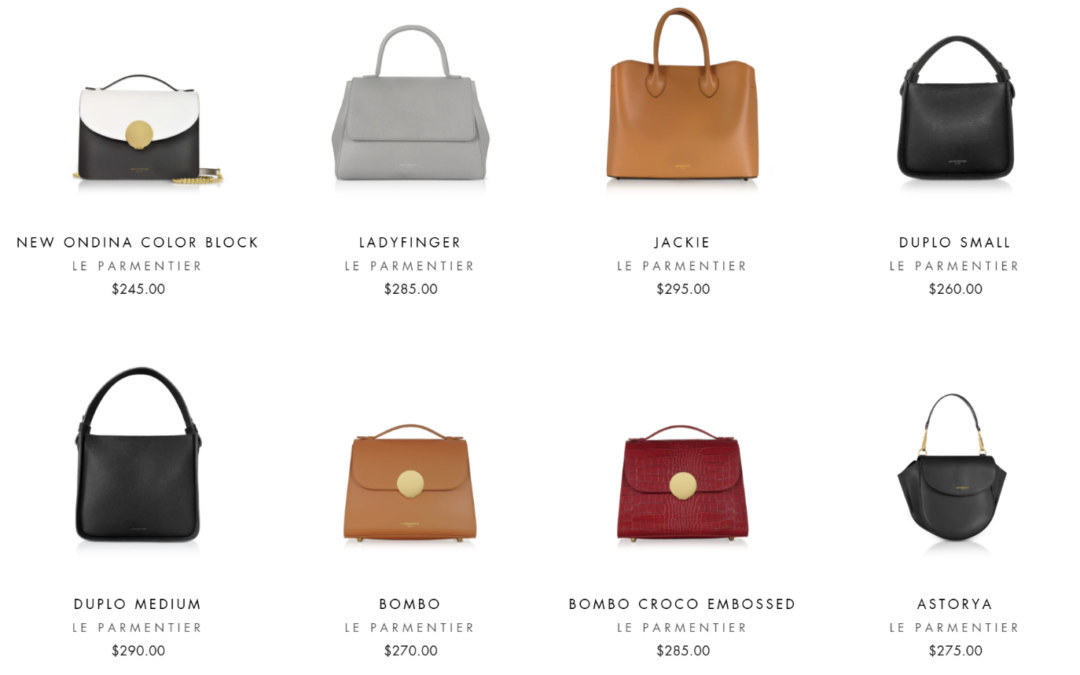
by Purba | Jan 25, 2025 | Top Trends |
The Captivating Story of Handbags Through the Ages
1. The Evolution of Handbag Fashion: A Historical Overview
Embarking on a whimsical journey through time, handbags have danced their way into our wardrobes with ever-evolving charm. Long before the celebrity-toted designer insignias of today, humble pouches first appeared in the cultural tapestries of ancient societies. These early bags, rudimentary as they were, served straightforward utilitarian purposes. Fast-forward to the more opulent era of the 16th century, and the evolution had advanced to intricate embroidered designs, appreciated not only for their practicality but also their decorative value. The 20th century heralded an unprecedented surge in handbag innovation, spurred by global fashion icons and pioneering designers. The Art Deco movement ushered in geometrically exquisite purses, and the post-war boom fundraised the birth of must-have designer editions. Today’s handbag scene is a kaleidoscopic blend of nostalgia and novelty, converging on a rich tapestry of function and style. Thus, the handbag has waltzed through centuries with grace, serving not merely as an accessory but a statement of social and cultural evolution.
2. The Role of Handbags in Personal Style and Expression
What lies on the arm, speaks volumes of the person. In the realm of personal style, handbags take center stage as bold pronunciators of individuality. Much like a signature on a masterpiece, a handbag can define a look, tell a story, or spark a conversation. Whether it’s the understated elegance of a minimalist clutch or the rebellious flair of a neon crossbody, every choice reflects the wearer’s personality and intentions. Handbags offer more than just compartmentalized havens for our essentials; they are power symbols that convey confidence, creativity, and charm. The same person might choose a sleek black tote for an office power meeting and a vibrant beaded bag for a night on the town, each decision significantly elevating their personal style narrative. So, it’s no surprise that a handbag is often the fun-loving alter ego in the world of fashion, constantly shaping and reshaping the ideas of beauty, utility, and expression. A cherished handbag becomes the trusted companion in one’s style adventure, vociferously declaring, ”This is me.”
3. Choosing the Right Handbag for Different Occasions
In the whimsical universe of handbag fandom, selecting the perfect arm candy for any event is no Herculean task when armed with a dash of savvy. Think of handbags as a merry band of merry-making muses, each with its own song for different occasions. The gala night calls for an opulent clutch, unduly winking and sparkling under the evening lights as you twirl around the room. Meanwhile, a bustling day at the office demands a spacious tote, its size as impressive as its capability to triumph over the chaos of work. But let’s not forget the casual coffee date, where a chic crossbody steps in to casually sling its magic over your shoulder, balancing style with purse-on comfort. From backpacks that whisper of adventure to elegant satchels that echo of sophistication, every occasion has its kindred spirit. The joy lies in matching these companions to your calendar, always with one question as your compass: which bag best narrates the day’s story? Because, after all, it’s not merely about carrying your belongings but about owning the spotlight, wherever you stride. For those seeking unique and stylish options, the Le Parmentier collection offers a delightful array of choices.
4. Top Handbag Trends in Contemporary Fashion
Ah, the dazzling world of today’s handbag trends, where innovation waltzes hand-in-hand with homage to the classic styles. In recent seasons, the streets have been awash with the unmistakable allure of oversized totes, practically challenging Mary Poppins herself in their spatial logic. Nostalgia wears the crown as vintage silhouettes make a triumphant return, showcasing everything from horse-bit hardware to sumptuous, buttery leather. Bold, eye-catching colors, unrestrained by seasons, stand side-by-side with intricate embroidery that whispers tales from far-off lands. Meanwhile, sustainability has unfurled its banner in the ranks, with eco-friendly materials striding down the catwalk with poise and purpose. And let’s not gloss over the charm of personalization; quirky monogrammed initials raise eyebrows and hearts alike, transforming each handbag into a bespoke treasure. In the vibrant mosaic that is contemporary fashion, these trends signal a mesmerizing medley of craft, innovation, and tradition, all while encapsulating the wearer’s unique journey through style. So here stands modern fashion, bag in hand, ready to steal the spotlight.
5. Caring for Your Handbag: Maintenance Tips for Longevity
Your beloved handbag is an artistic investment that deserves bestowing care with a dash of panache. First, from the armor of protective sprays for leather and suede, ensure your bag remains impervious to the whims of weather. When it comes to storage, seek out the embracing cocoon of dust bags when your handbag is on interlude from acting as your daily companion. Watch out for handbag hazards, as makeup spills and pen leakages plot coups within the confines of your purse; separate compartments or small pouches to house these items can save the day. Akin to a yearly health check-up, periodic cleaning revives your handbag’s fabric or leather. Gentle cloth and soap solutions do wonders, though stubborn spots might need the prowess of professional cleaning services. Finally, when the weight of the world rests on your shoulder, remember not to let it burden your bag—a handbag, no matter how prized, has no love for being overstuffed. By showering your handbag with this thoughtful care, it will likely regale you with years of faithful service, ever ready to accentuate your stylish escapades.
You can write to us at fashionnovationfd@gmail.com
We read and publish your articles!
You may also like to read:
Where to buy high-quality rep shoes? (Men & Women)
The Timeless Appeal of Jordan 4: A Sneaker Icon’s Legacy
The Ultimate Guide to Plant-Based Supplements for Fashion-Savvy Athletes
The Art Of Gifting: Customized Leather Gifts For Women
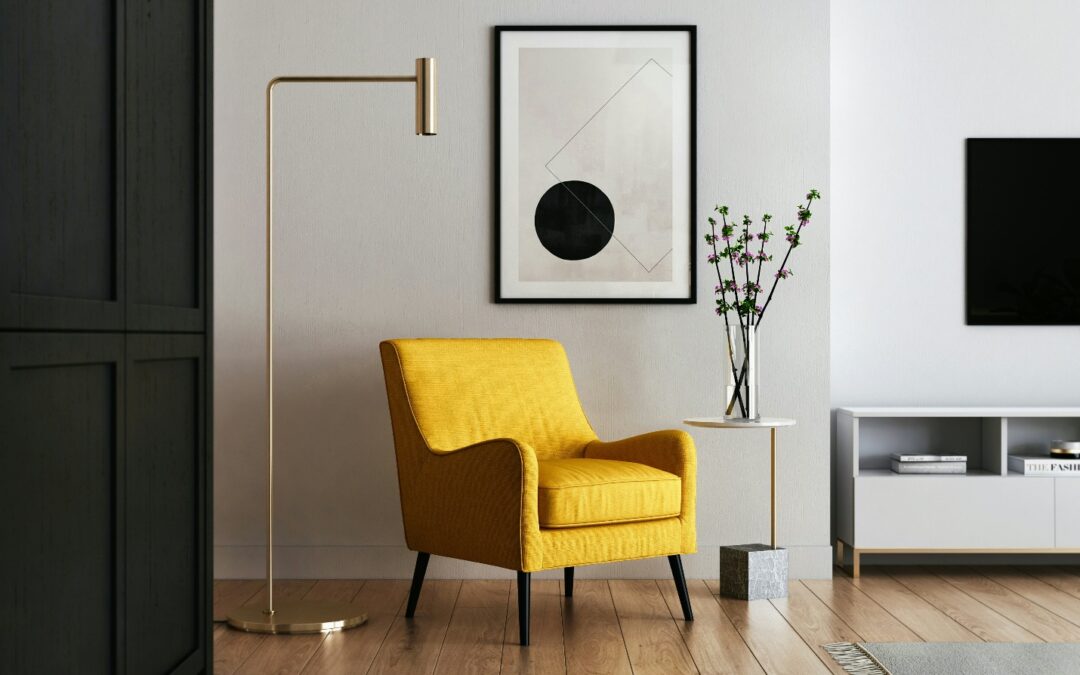
by Purba | Jan 13, 2025 | Top Trends |
In the dynamic world of design, where creativity meets functionality, fashion often finds itself intricately connected to interior design. Both disciplines share a mutual appreciation for aesthetics, balance, and the power of self-expression. Just as a well-tailored outfit transforms an individual’s appearance, a thoughtfully designed interior elevates the ambiance of a space. Among the key elements that bridge this gap are lighting and textiles, which play vital roles in shaping environments.
The Role of Lighting in Interior Design
Lighting is to interiors what accessories are to fashion—a crucial yet often overlooked detail that makes all the difference. It not only illuminates a room but also creates mood, enhances color palettes, and highlights focal points. Modern lighting brands, such as Eurofase, lead the way in blending sophistication with innovation. Known for their elegant designs and impeccable craftsmanship, Eurofase’s collections are perfect for adding a touch of luxury to residential and commercial spaces alike.
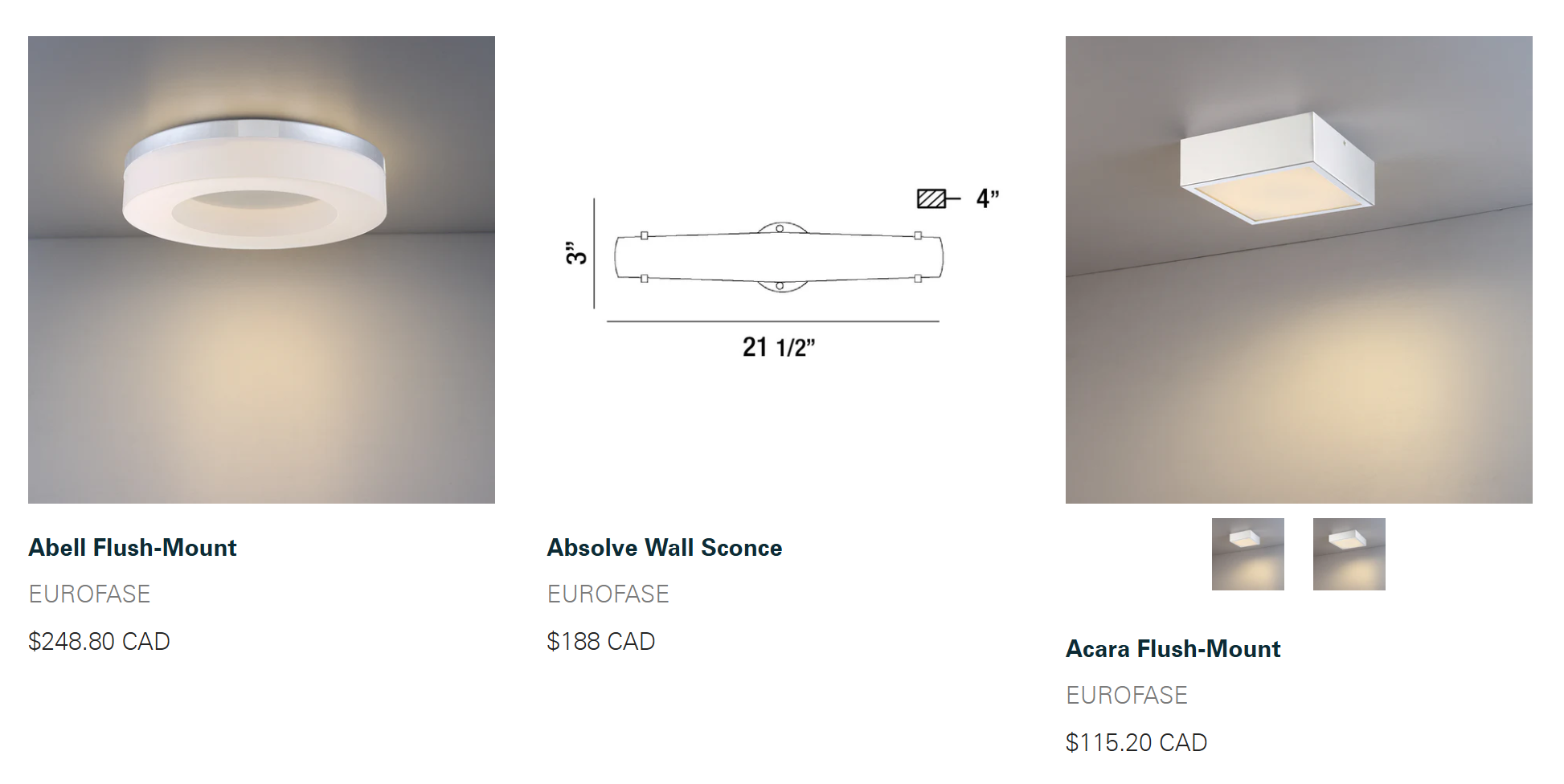
Some lighting collections. Photo courtesy: unionlightiing.com
Whether it’s a statement chandelier above a dining table or sleek recessed lighting in a living room, such pieces act as functional art. Like a designer’s signature piece on a runway, these lights command attention and define the room’s aesthetic.
Textiles: The Fabric of Interior and Fashion Design
Textiles are another intersection where fashion and interiors beautifully converge. Rugs, upholstery, and drapery can either complement or contrast with the space’s lighting, just as fabric choices in clothing can amplify or subdue an outfit’s impact. Brands like Loloi exemplify the art of textile design. Such rugs combine timeless craftsmanship with contemporary trends, creating pieces that are as stylish as they are functional.

Different types of rugs. Photo courtesy: unionlightiing.com
For instance, layering a rug in a neutral palette under an opulent chandelier is akin to pairing a minimalist dress with bold jewelry—an interplay of subtlety and grandeur. This harmony reflects a curated approach to interior design, where each element contributes to the overall narrative of the space.
Bridging Fashion and Lifestyle
Fashion and interior design are ultimately about storytelling. They allow individuals to express their identity, whether through a bespoke outfit or a meticulously designed living space. Homeowners and designers alike now have the tools to create spaces that not only look exquisite but also feel deeply personal.
In today’s world, where home aesthetics are increasingly showcased on platforms like Instagram and Pinterest, having a well-lit and beautifully furnished interior has become as important as wearing the latest fashion trend. The synergy between lighting, textiles, and other design elements ensures that every corner of your home tells a story—your story.
You can write to us at fashionnovationfd@gmail.com
We read and publish your articles!
You may also like:
Crafting Iconic Designs: How Fashion Designers Can Harness the Power of Adobe Express
How Much Do Fashion Designers Make? Unveiling the Earnings of Creative Minds
Meanmagenta Marbling & Photography

by Purba | Jan 3, 2025 | Top Trends |
Long voluminous scarves were not noticed among top fashion trends this winter. So if you don’t want to look like you are from 2012 and dress according to the latest fashion trends – stay healthy and avoid colds and coughs.
That is, of course, a joke, but the cold winter season is really a challenge for those who want to stay healthy, trendy and active. Cold air outside and dry indoor environments, active flu and cold viruses, weak immunity-all this increase the risk of getting a seasonal cold and long-lasting cough. Thankfully, there’s a natural remedy for supporting lung health and respiratory function: mullein leaf extract.
So let’s talk about supplements that help to feel better naturally and always feel and look great, no matter what season it is outside.
Mullein Leaf Extract: Your Natural Relief for Winter Colds
What is mullein and why is it becoming more and more popular for respiratory system support?

Mullein Leaf
Mullein leaves, flowers and even roots have been used for centuries not only in America but also in Europe and Asia. It was because of its strong anti-inflammatory qualities and noticeable benefits for respiratory health. The plant has a history of use in treating conditions such as coughs, bronchitis, asthma, and colds. It is also used as an effective remedy for lung detox and protects lungs from dangerous conditions that may be caused by smoking, air pollution and other factors.
How Mullein Can Help Your Respiratory Health?
Mullein leaf extract is rich in flavonoids and saponins that are commonly known for their soothing and anti-inflammatory properties and are highly effective for the respiratory system.
When it comes to respiratory system and lung health issues, mullein has some outstanding benefits:
- Mullein helps to cough up mucus that is really helpful during the winter months when colds and flu are often leading to congestion and respiratory discomfort.
- Mullein extract is used to reduce inflammation in the airways for people suffering from chronic respiratory conditions like asthma or bronchitis. It opens up the airways, making it easier to breathe.
- Mullein leaf has strong natural antibacterial and antiviral properties that protect the lungs from infections, reducing the duration of respiratory illnesses like the common cold or flu.
- Regular taking of mullein drops or herbal tea has been linked to improved lung function, as it supports the respiratory system and reduces the frequency of coughing or shortness of breath.
Taking mullein supplements can help you not only breathe easier during the cold winter months, but also support your overall well-being.
The Winter Benefits of Mullein Drops for Your Lungs
Mullein leaf extract nowadays is produced in different forms, such as tea, capsules and tinctures, and of course mullein drops.
The Advantages of Taking Mullein Drops
Mullein drops have some noticeable benefits over other forms of mullein supplements:
- Faster absorption into the bloodstream that makes them a great option when you need immediate support.
- High concentration and exact dosage in each serving unlike, for example, mullein teas or capsules, which may contain lower concentrations of the active ingredients.
- Drops are easy to use – you can carry the bottle everywhere – in your purse or gym bag. This is especially important for active and busy people and during the holiday season.
- High-quality mullein drops from trusted brands are free from artificial additives and harsh chemicals, which makes them a gentle option to care about health and wellness of the whole family.
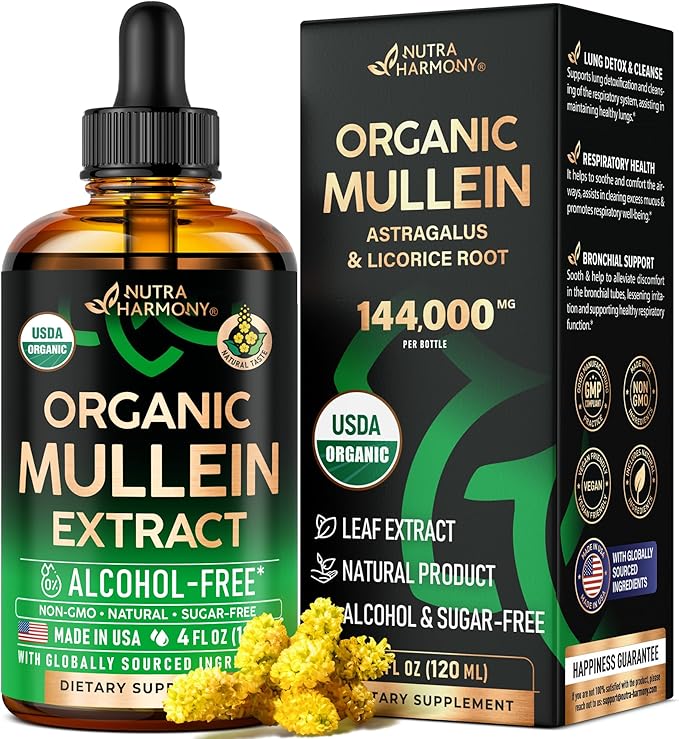
Organic mullein extract
The cold season always brings many challenges for our respiratory system. And taking mullein drops can bring some benefits for respiratory system health:
- Moisturizing dry airways, soothing and preventing irritation and coughing.
- Prevents winter colds thanks to its natural antiviral and antimicrobial properties.
From now on, winter may be a fashion season for you, not a season of coughing. By incorporating mullein drops into your wellness routine, you can naturally support your respiratory health preventing seasonal illness throughout the colder months.
Mullein Supplements: Dosage and Tips for Use
The typical dosage for mullein drops depends on each brand and may vary between 10-30 drops, 1-3 times daily. So read the information on the bottle carefully and consult with your healthcare provider before starting a new supplement.
Mullein can be also taken together with vitamin C, zinc, or elderberry that support immunity and lung health and give better results as a combo. You can also combine it with essential oils like eucalyptus or peppermint for more respiratory benefits. And don’t forget to drink plenty of water during the day to keep your airways hydrated.
Conclusion
Mullein leaf extract is known for its ability to soothe inflammation, clear mucus, and protect the respiratory system against winter illnesses. With such great qualities, mullein drops should become a must-have in every active woman’s winter wellness routine. So take good care about your health and stay chic and beautiful throughout the winter season.
You can write to us at fashionnovationfd@gmail.com
We read and publish your articles!
You may also like:
Elevate Your Look: How Biotin and Collagen Are Fueling Men’s Hair Trends
What happens if you stop using bakuchiol?

by Purba | Dec 27, 2024 | Top Trends |
In the world of fashion and lifestyle, where every detail matters, motherhood brings a new dimension of beauty and challenge. Breastfeeding, often hailed as the most natural process, doesn’t come naturally to everyone. For many mothers, including those immersed in the fast-paced fashion industry, breastfeeding can present hurdles that demand patience, understanding, and alternative solutions.
This article explores why some women face difficulties with breastfeeding, and how embracing this journey—whether smooth or challenging—can be a testament to a mother’s strength and resilience.
1. Physiological Reasons
Before we get into specific medical conditions, let’s take a look at how our bodies are naturally designed for breastfeeding and what physical factors might affect this natural process.
Insufficient Glandular Tissue (IGT)
Some women are born with insufficient milk-producing tissue in their breasts, a condition known as hypoplasia or IGT. Think of it like trying to produce orange juice with only half an orange – no matter how hard you squeeze, you can’t get the same amount as you would from a whole fruit. Signs of IGT include that breasts are widely spaced, tubular in shape, or asymmetrical.
Hormonal Issues
Our hormones are like a complex orchestra – when one instrument is out of tune, it affects the whole performance.
● Conditions like thyroid disorders or polycystic ovary syndrome (PCOS) can significantly impact milk production.
● Prolactin and oxytocin, the key hormones in milk production and letdown, need to be in perfect harmony.
2. Medical Conditions
Sometimes, previous medical procedures or ongoing health conditions can affect a woman’s ability to breastfeed.
Previous Breast Surgery
Past breast surgeries can impact breastfeeding success. Breast reduction surgery might have affected milk ducts or nerve connections essential for milk production. Even breast augmentation can sometimes interfere with natural milk flow.
Infectious Diseases
Certain infectious diseases can make breastfeeding unsafe for the baby. While rare, conditions like HIV or active tuberculosis might require mothers to avoid breastfeeding entirely. Additionally, some medications needed to treat various conditions can affect milk production or might not be safe for the baby.
3. Milk Production Issues
Let’s talk about what happens when the milk-making process doesn’t go as planned. Even when everything looks fine on the surface, sometimes the production line just isn’t working at full capacity.
Delayed Milk Production
For some mothers, milk doesn’t come in right away after birth. Usually, breast milk will take a few days to transition from colostrum to mature milk, but some women experience a longer delay. This can be particularly stressful when you’re trying to feed a hungry newborn.
Low Milk Supply
Even when milk production starts, some women struggle to maintain an adequate supply. This can happen for several reasons, such as a bad latch, not enough breast stimulation, or an underlying medical problem.
4. External Factors
Breastfeeding doesn’t happen in a vacuum – our environment and emotional state play crucial roles in this journey.
Stress and Psychological Factors
Stress is like kryptonite to milk production. When you’re anxious, overwhelmed, or dealing with postpartum depression, your body might not cooperate as well as it should. The stress hormone cortisol can actually interfere with oxytocin, the hormone responsible for milk letdown.
Lifestyle and Environmental Barriers
Modern life doesn’t always make breastfeeding easy. Returning to work, lack of private pumping spaces, or insufficient support can create significant hurdles. Sometimes, it’s not about physical ability but about practical limitations.
What Are the Best Alternatives When Breastfeeding Is Challenging?
Fortunately, there are many ways to make sure your baby gets the food they need when nursing is hard. Let’s look at some helpful options and solutions.
Use a Breast Pump to Express Breast Milk
Pumping your own breast milk and bottle-feeding it to your baby is considered the next best option to direct breastfeeding. Over 85% of breastfeeding women pump milk at some point, making this a common and viable alternative. Using a breast pump can help stimulate milk production, which may also enhance the overall success of breastfeeding.
Consider Commercial Formula
Commercial infant formula is a well-studied and regulated alternative that provides a specific balance of nutrients to meet your baby’s needs. This option is particularly valuable when breast milk is not available or sufficient.
Choose Donor Breast Milk
Milk banks provide a safe option through strict safety protocols and pasteurization processes. This milk is typically available with a doctor’s prescription.
Seek for Professional Support
Working with lactation consultants can help address common challenges such as:
● Latching difficulties
● Sore nipples
● Low milk supply
● Breast engorgement
What Not to Do if You Can’t Breastfeed Baby
During this time of transition, knowing what not to do can also help you avoid possible risks and make sure your baby gets safe, enough nutrition.
Never Use Homemade Formula
Avoid creating homemade infant formula as it lacks proper nutrient balance and can be dangerous for your baby’s health.
Don’t Delay Seeking Help
Avoid putting off getting professional support when experiencing breastfeeding difficulties, as delays can lead to more complications.
Don’t Blame Yourself
Avoid focusing on what you can’t do. There are many legitimate medical and physical reasons why breastfeeding may not be possible.
Avoid Unsafe Milk Sharing
Don’t accept donor milk from unscreened sources. If using donor milk, only obtain it through regulated milk banks or with guidance from your healthcare provider

Bond with mother and child.
FAQs About Breastfeeding Challenges
1. How Can I Bond With My Baby if I Can’t Breastfeed?
There are many ways to bond with your baby beyond breastfeeding. Skin-to-skin contact, holding your baby while feeding, and engaging in eye contact during bottle-feeding can foster closeness. Additionally, talking, singing, and playing with your baby contribute to building a strong emotional connection.
2. What Should I Avoid if I’m Using Formula for My Baby?
It’s important not to mix the formula with water or other things when using it, because doing so can change the balance of nutrients and cause malnutrition. Also, stay away from homemade formulas because they might not have enough important nutrients. To make sure safety and nutrition, always follow the preparation guidelines.
3. Is It Safe to Mix Breastfeeding and Formula Feeding?
Yes, many mothers successfully combine breastfeeding and formula feeding. This is called “combination feeding.” This method lets you provide your baby breast milk while still making sure they get enough nutrition from formula. Talk to a doctor about how to make a good feeding plan for your baby.
4. Can My Diet Affect My Ability to Breastfeed or Produce Milk?
Yes, what you eat can affect how much and how good your milk is. For the best milk production, you need to eat a healthy meal full of vitamins and minerals, and hydration is essential for optimal milk supply. For specific nutritional advice that fits your nursing journey, consult a healthcare provider or a registered dietitian for personalized dietary advice.
5. How Do I Know if My Baby Is Getting Enough Food, Whether I Feed Them Formula or Breast Milk?
Signs that your baby is receiving adequate nutrition include regular weight gain, producing a sufficient number of wet and dirty diapers (generally six or more wet diapers per day), appearing satisfied after feeding, and having good energy and alertness. Regular check-ups with your pediatrician can also help assess your baby’s growth and nutrition.
Accept Your Nursing Journey and Recognize Your Worth
Every mother’s journey with nursing is unique. The most important thing is that your baby is fed and healthy, not how you can breastfeed successfully, partially, or not at all. Keep in mind that your worth as a mother isn’t measured by your ability to breastfeed.
During this journey, it’s very important to have support and understanding. Talk to your doctor, a lactation expert, or a support group if you’re struggling with breastfeeding. During this difficult time, they can provide valuable guidance and reassurance.
You can write to us at fashionnovationfd@gmail.com
We read and publish your articles!
You may also like:
7 Unique and Practical Gifts That Mom Will Actually Use
How to Use Fashion to Make a Memorable First Impression Online
Healthy is the New Black: Why We Should Try Mullein Drops for Respiratory Support
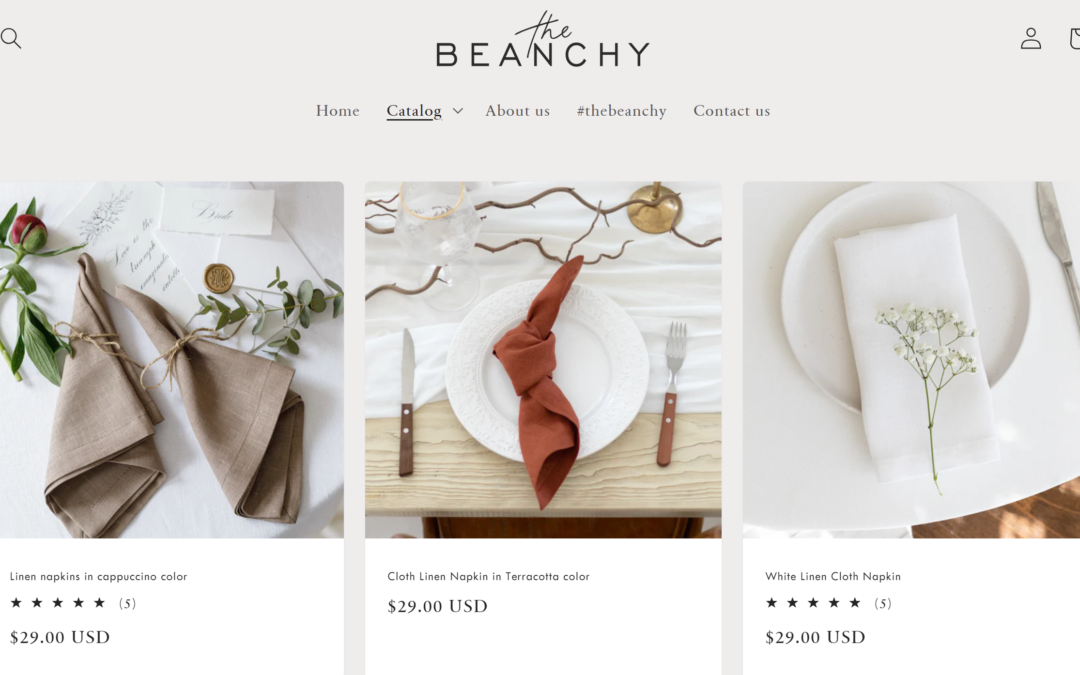
by Purba | Dec 24, 2024 | Top Trends |
People started to spend more time at homes after COVID-19 and the lockdown, and this trend didn’t change a lot afterward. Most of us want to feel comfortable and relaxed in settings where we spend more time. Thus, it’s no wonder that so many people have started paying attention to their experiences, especially when related to dining.
It’s now more common to set a table beautifully to have dinner with friends and family. One of the most important parts of this experience is often overlooked: napkins. High-quality products, such as linen fabric napkins, bring the dining experience to the luxurious level. This post explores the advantages of various sets and collections of products from shops like The Beanchy and the advantages of using them.
What Are Linen Napkins and Why Are They Popular Among Consumers
Linen napkins are durable and elegant table accessories made from flax fibers. Pure linen napkins have a soft texture and a natural finish, which feels rather satisfying when you touch them. They work well in formal dining settings because of their high-quality appearance, but commercial use isn’t the only possible scenario. Many now prefer such napkins at home for special occasions and celebrations.
Manufacturers also create napkins using blends of linen and cotton. These blends combine the strength of linen with the softness of cotton. Blended napkins are as to maintain, but they often cost less than pure linen. Overall, regardless of the type of product, the quality is premium and is suitable for kitchen usage, dinners at home, restaurants, and so on.
Advantages of Linen Napkins
There are many advantages of these items, regardless of whether you select pure or blended linen napkins:
- They are durable and withstand frequent use.
- They are reusable, so they reduce waste and save money.
- Pure linen napkins feel soft, absorb spills, and offer a natural texture.
- Blended linen napkins combine the strength of synthetic fibers with the elegance of linen.
- They maintain their shape and color even after multiple washes.
- They add elegance to formal table settings and practicality to casual meals.
- Linen napkins suit home use because they last longer than disposable options.
- They offer eco-friendly benefits because they minimize reliance on single-use products.
Restaurants and hotels use them because they resist stains and look professional. But they’re also amazing for homes for the same reasons.
You may also like to read:
Exploring Personal Style Through the Stars: Can Your Horoscope Influence Fashion Choices?
The Timeless Appeal of B3 Men’s Bomber Jackets: A Fashion Icon Reimagined
Elevate Your Well-Being: Custom Physical Therapy Solutions for the Fashionably Active
You can write to us at fashionnovationfd@gmail.com
We read and publish your articles!










